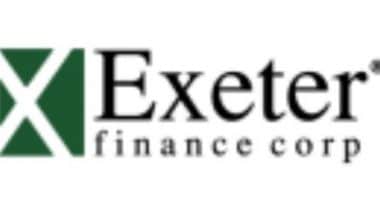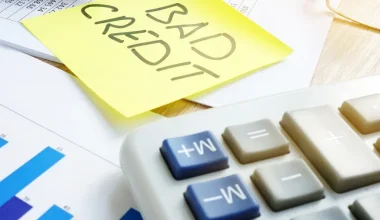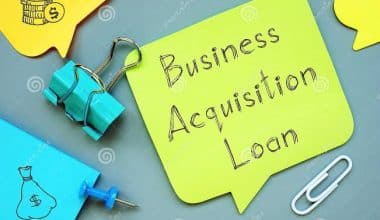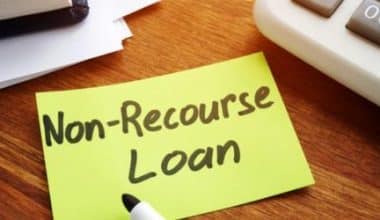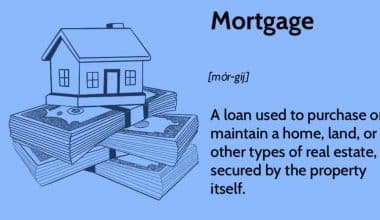You can get a secured loan also known as a collateral loan with bad credit. Collateral allows you to obtain money from a financial institution by pledging an asset as security. Loans secured by property have lower interest rates than unsecured loans do. Lenders have the right to sell collateral as loss mitigation in the event of a default.
The two types of loans that financial institutions offer are secured loans and unsecured loans. The main distinction between the two is that to qualify for a secured loan, borrowers must put up collateral. An asset known as collateral lowers the risk for a lender by shielding them from potential borrower default. Lenders have the option of selling the security to cover any losses.
Therefore, many people decide to use collateral to secure their pawn loans or bad credit loan.
Collateral Loan
Secured loans and unsecured loans are the two main types of loans that banks and non-banking financial institutions (NBFCs) typically disburse. A secured loan known as a collateral loan requires the borrower to pledge an asset before they can apply for the loan. The lender will sell the collateral, or asset if the borrower defaults on the loan. Conversely, unsecured loans don’t demand collateral from the borrower.
For a financial institution, collateral increases the security of loans. Even those with excellent credit can frequently default on their loan repayments. Having collateral safeguards lenders’ interests because they can recoup their losses if a loan is not repaid by selling the item.
If you default on a secured loan, the lender may seize the asset you pledged as security. This makes you, the borrower, more at risk while making the lender less at risk. Because of this, secured loans may be more affordable and simpler to get approved for.
What Can Be Pledged as Collateral?
You may use the following items as security for collateral loans:
#1. Vehicles
Movable assets include machinery and vehicles. Loans may be secured by movable property with a high resale value. A borrower may occasionally be asked to give up physical possession of a movable asset to obtain a collateral loan from a lender.
#2. Gold and Other Valuables
Due to its value, gold can be used as collateral for loans. The use of gold coins, bars, and jewelry as collateral is thus possible. In addition to gold, other valuable items like antiques and works of art can be used as collateral for loans.
#3. Land or Property
Collateral most frequently takes the form of real estate. Financial institutions can use your house or a large piece of land as collateral for a loan by using their value.
#4. Personal Investments
Additionally, you may pledge your assets as security. Bonds, mutual funds, and stocks are all part of it. For instance, When a company seeks bank financing, it may use valuable assets like real estate or equipment as collateral for the loan.
Common Types of Collateral Loans
These are the groups into which the majority of collateral loans fall.
#1. Mortgage.
The real estate you are financing serves as security for collateral loans on the property. If you don’t make your payments, the loan may default, in which case the lender may seize and sell your house to recoup its losses.
#2. Home Equity Loan.
A home equity loan is similar to a mortgage, with the exception that it is secured by the equity in the property, which is the sum of the mortgage’s remaining balance less the value of the home today. This kind of loan also referred to as a “second mortgage,” enables you to borrow money using the equity in your home.
#3. Vehicle Loan.
A vehicle is a security for any loan taken out to pay for the purchase of a car, truck, boat, motorcycle, or even a private plane. Failure to repay the loan could result in the vehicle being repossessed, much like with a mortgage.
#4. Secured personal loan.
Personal loans can be used for several things, including paying for a large purchase or combining credit card debt. Lenders offer both secured and unsecured personal loans. Placing collateral upfront will result in better terms and interest rates for a secured personal loan. Cash, a car, stocks, bonds, jewelry, collectibles, and other items are just a few of the assets you can use as collateral to secure a personal loan.
How to Apply for a Collateral Loan
Follow these crucial steps to ensure approval if you decide a collateral loan is the best choice for you:
#1. Check Your Credit.
Even if you don’t have excellent credit, using collateral to secure a loan may help you get approved. To obtain the best repayment terms and lowest collateral loan rate, it is still beneficial to maintain excellent credit. Review them for mistakes or any negative marks that you should remove before submitting a loan application, such as a late payment.
#2. Choose Your Collateral.
If you are applying for a home or auto loan, the asset you are financing will serve as collateral for your loan. You do have choices, though, if you’re getting a secured personal loan. Decide which assets you can use to secure the loan, and try to pick ones that are liquid and simple to get to, like money in a bank account.
#3. Gather Your Documentation.
It’s beneficial to gather all the necessary papers and data before you submit your application. Your name, birth date, Social Security number and driver’s license are just a few of the pieces of information you can anticipate being requested.
Government-issued forms of identification in addition to records demonstrating your income and assets, such as bank statements, W-2s, pay stubs, and most recent tax returns, are also acceptable. Lenders may also request a list of commitments, such as ongoing debt repayments, regular rent or mortgage payments, payments for a child or spousal support, and other ongoing expenses.
#4. Shop Around for the Best Collateral Loan Rates.
It’s crucial to obtain quotes from several lenders and evaluate the terms and rates of collateral loans before completing the full application process. Online quotes are simple to obtain and usually only necessitate a soft credit check, having no negative effects on your credit.
#5. Choose Your Lender and Apply.
You can complete the entire application process once you’ve found an offer that meets your requirements and price range. Be aware that when you formally apply for a loan, your credit reports will be subject to a hard credit check. Your credit score, though, should only be temporarily and minimally affected.
Benefits of Collateral Loans
#1. Easier to Get Approval
The likelihood of your approval is higher. Securing a loan with collateral may help lower your risk as a borrower if you’re having trouble getting a loan, perhaps because of credit problems or a brief credit history.
#2. Easier to Get a Larger Loan
You could be eligible for a bigger loan. Similarly, you might be able to borrow more money than you would otherwise be able to because you are lowering the lender’s risk by putting up collateral.
#3. It Provides Short-Term Liquidity.
A collateral loan can help you access money if all of your funds are held in assets that are difficult to sell, like a home or valuables, without having to go through the time-consuming process of selling those possessions.
Disadvantages of Collateral Loans
#1. Risk of Losing the Assets
If you fail to repay the loan, you risk losing the security. If you default on a collateral loan, your biggest risk is that you will lose the asset. It’s particularly dangerous if you use a highly valuable asset, like your home, to secure the loan.
#2. It Requires You to Have a Valuable Asset.
You must initially have something valuable to offer as collateral, which could be another problem. You don’t have to give anything in exchange for an unsecured loan, other than your credit score, so you can borrow money from one. It might be difficult to come up with the collateral required to secure a loan if you are not eligible for an unsecured loan.
How Do Collateral Loans Work?
Before granting you a collateral loan, lenders will take the time to evaluate the worth of your collateral. They will take your possessions’ fair market value, or, if you have a mortgage, the home’s appraised value, into account when doing this. You will get a portion of the value of your collateral, and this will determine how much of a loan you will receive.
Personal Collateral Loan
To borrow money for almost any purpose, including to pay off debt, cover an unexpected medical expense, or even to repay a student loan, you can apply for a personal loan. Over time, usually between two and five years, you pay back the loan in interest-bearing monthly installments. The majority of personal loans are unsecured, which means that there is no form of security to support them. Instead, your ability to repay the loan depends on your financial history, including your FICO Score, your income, and any other criteria set by the lender.
What Are the 4 Types of Collateral?
Many times, the type of loan will dictate the kind of collateral. Your home becomes collateral when you obtain a mortgage. The car will act as collateral if you get a car loan. Diverse assets are acceptable as collateral from borrowers. The primary forms of collateral typically provided include:
#1. Real Estate
The most common kind of collateral is property and land. This might take the form of real estate or other assets the borrower owns as part of a portfolio, such as their residence. Lenders have a positive opinion of real estate because it holds its value well over time. Additionally, real estate is frequently worth several hundred thousand dollars, providing you, the borrower, with a chance to obtain additional funding.
#2. Inventory Financing
Inventory financing uses the term “collateral” to refer to a list of goods pledged as security for a loan. Any quantity of items with a total value sufficient to repay the loan could be included in the inventory. If the borrower using inventory financing defaults on the loan, the lender may seize and sell the inventory items to recoup the debt.
#3. Invoice Collateral
When you use unpaid invoices as collateral for a loan, you use the phrase “invoice collateral” to represent it. Small businesses frequently use this kind of collateral when they are securing a loan by presenting unpaid customer invoices. Those invoices would eventually be paid directly to the lender to make up for any loss if the company were to default on the loan.
#4. Blanket Liens
When you use a “blanket lien” as collateral, it means that the lender has the legal right to take possession of any property owned by the borrower if he fails to pay back the loan. Theoretically, a blanket lien gives the lender a legal interest in every asset owned by the borrower because they are all considered to be collateral. Once more, companies that have a large number of assets they can use as security are more likely to offer this type of collateral.
#5. Cash-Secured Loan
Cash is another option for collateral, particularly if a person has several open accounts with the same bank. The bank that manages a person’s accounts can grant them a loan, and if they don’t make the payments, the bank can simply liquidate the account to recover the remaining balance.
What Are the Examples of Collateral for a Loan?
#1. Residential Mortgage
This kind of loan uses the value of your home as secured collateral. The lender may file a lawsuit to reclaim your property if you miss a set number of equated monthly installments (EMIs). After that, they might sell the house to recoup their debt.
#2. Home Equity Loans
Equity loans turn the property’s equity into cash, much like a mortgage does. An EMI-based loan with a fixed rate offers a fixed amount. For the entire loan period, the interest rate is fixed.
Based on the equity in your home that is currently available, the Home Equity Line of Credit (HELOC) approves a specific amount. Afterward, you can withdraw this cash. Additionally, the monthly payment varies depending on the amount borrowed and the interest rate.
What Are the Types of Collateral?
- Real estate collateral
- Inventory collateral
- Invoices collateral
- Blanket lien
- Cash collateral
- Investment collateral
What Is the Danger of a Collateral Loan?
If you fail to repay the loan, you risk losing the security. If you default on a collateral loan, your biggest risk is that you will lose the asset. It’s particularly dangerous if you use a highly valuable asset, like your home, to secure the loan.
Can I Get a Collateral Loan With No Job?
The lender considers your income, credit history, other debts, and other assets when you apply for a personal loan. The lender wants to make sure that you have enough money coming in to cover both the new loan payment and any existing debt payments concerning your debts and income.
A lender will need a professional appraisal if you intend to use jewelry, artwork, or collectibles as collateral and may also demand physical possession of the item until the borrower repays the loan. Verify prices and charges. Your situation may make you appear to be a riskier borrower if you don’t have a job. As a result, they might charge you for an installment loan at higher rates and costs. If the lender rejects your application, you can try reducing the amount of your loan or speaking with the lender to learn how you might be able to qualify.
Conclusion
In the financial industry, “collateral” is a priceless item that a borrower pledges as security for a loan. If you have a valuable asset to use as collateral, getting a loan might be simpler. You must provide collateral—an asset—when applying for a loan (or other types of financing to lower the risk to the lender). If you are unable to pay back the loan, the lender will seize the collateral you put up as payment to make up for their losses. Collateral can be in the form of the aforementioned items as well as real estate, machinery, stock, and other things.
Collateral Loan FAQs
What is a Collateral Loan?
Providing collateral allows you to obtain money from a financial institution by pledging an asset as security. Loans secured by property have lower interest rates than unsecured loans do
What are the Common Types of Collateral Loans
- Home Equity Loan
- Secured Personal loan
- Mortgage
- Vehicle loan
How Do Collateral Loans Work?
Before granting you a collateral loan, lenders will take the time to evaluate the worth of your collateral. They will take your possessions’ fair market value, or, if you have a mortgage, the home’s appraised value, into account when doing this. You will get a portion of the value of your collateral, and this will determine how much of a loan you will receive.
Related Articles
- MARKETING COLLATERAL: 19+ Types of Marketing Collateral You Need
- COLLATERAL FINANCE: Definition, Examples, & Types
- WHAT IS A SECURED LOAN? How To Obtain One
- COMMERCIAL LOANS: Understanding Commercial Loan, Types & Rates
- The 2023 Best Business Loans For Startups (Updated)

